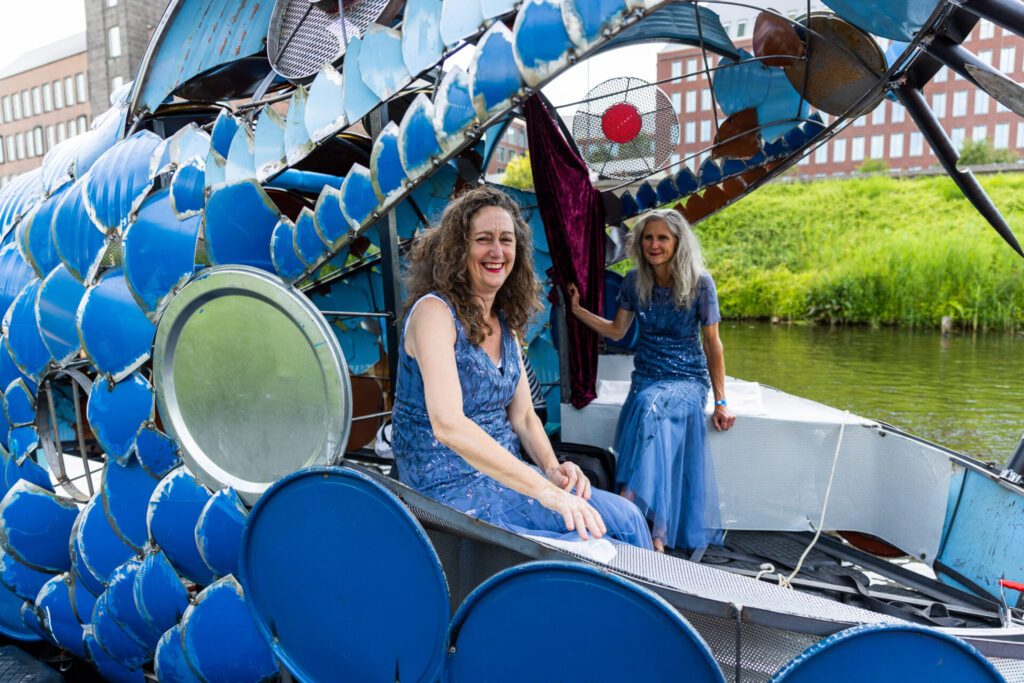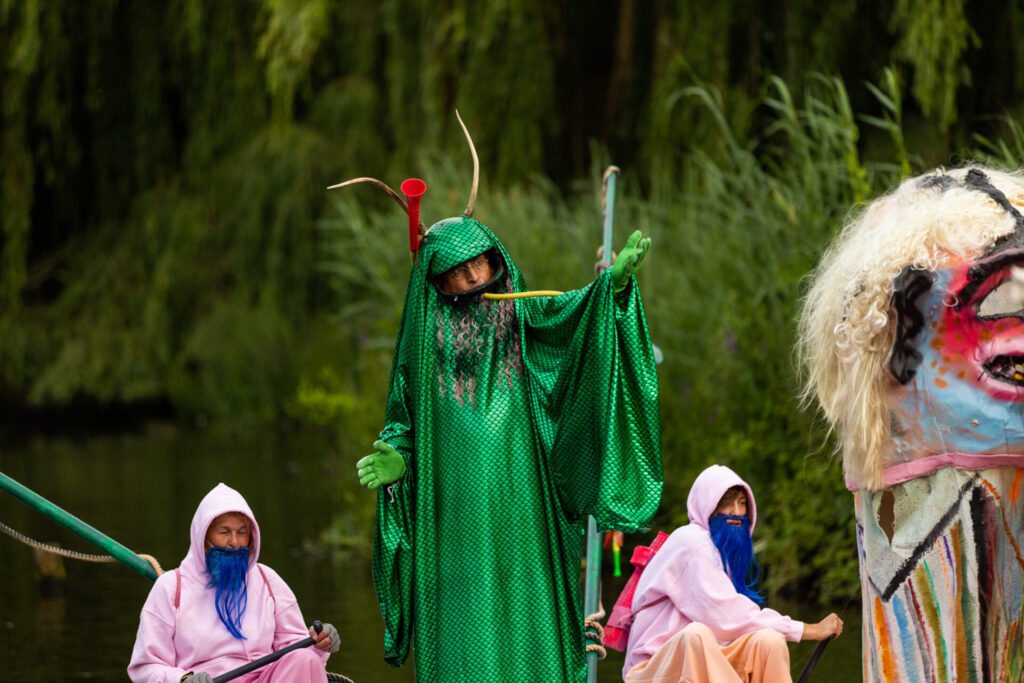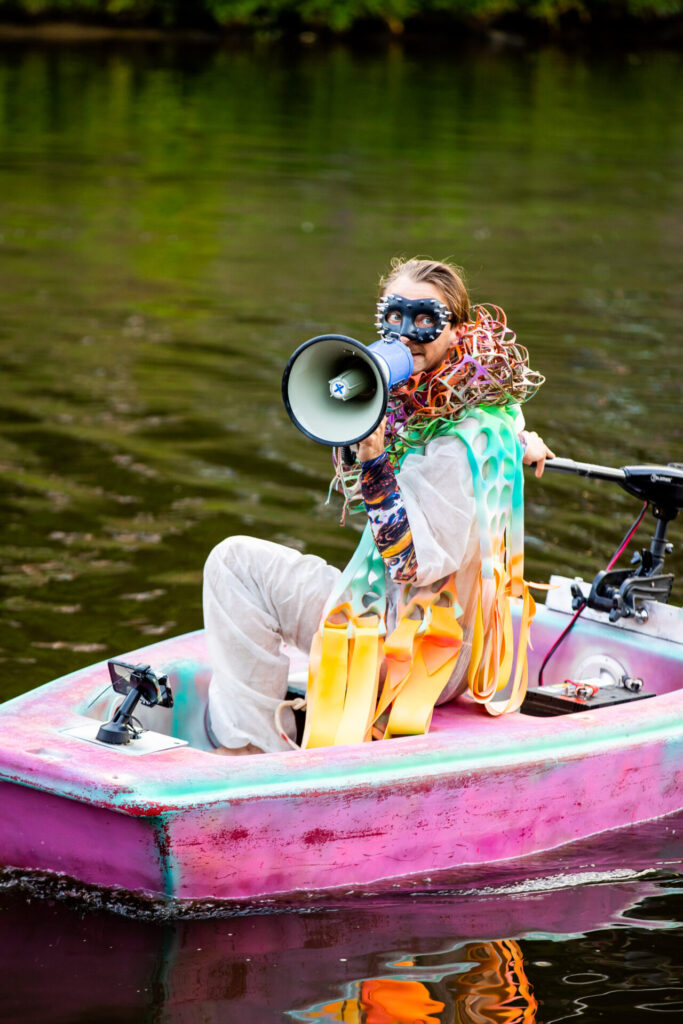CONTINUE ACTIVATING THE IMAGINATION

What do I want to communicate with my artwork? And how will the audience experience it? Stage director Koen van Seuren helps Bosch Parade participants find answers to those crucial questions. “The first step: how to translate a visual idea into a performance?”
Koen: “Many Bosch Parade participants have no experience with theatre or dance. As visual artists, they are used to showing their work in exhibition spaces and galleries. There, the concentration is unambiguous, people come there specifically to see your work – or not, of course. Bosch Parade requires a different type of concentration as you have to engage the imagination on a completely different level and keep activating it.”
Koen van Seuren knows what he is talking about. He creates his own performances, including with his company Antiklimax and with Het Zuidelijk Toneel. He is also involved in all kinds of fringe programming, involving both amateurs and professionals. He knows Bosch Parade from the inside; indeed, he also directed the last edition in 2022, together with Sarah Moeremans.
Koen: “Directing at Bosch Parade means, on the one hand, supporting the makers in their projects. The first step: how to translate a visual idea into a performance? I engage with them early on about what they want to make, be at rehearsals and see if actors or dancers, for example, are needed – and then I go find them. I think it is very important that the artist remains true to her own imagination; I interfere as little as possible with that active process but advise where necessary. For example, if she wants an actor to portray a certain emotion, I give direction tips. If she wants more interaction with the audience, I help here think of possibilities. But it is and remains here work of art.”
The other, equally important task of the Bosch Parade director is to help determine the order of the works of art. Koen: “All the works in Bosch Parade are connected by theme, but they do not appear in a traditionally chronological form. Based on very diverse facets such as rhythm and timbre, but also quietness or, on the contrary, a lot of noise, artistic director Miesjel van Gerwen, composer Aart Strootman and I try to find a suitable sequence. With each object we weigh the pros and cons: does this fit here or better over there? The goal is that it becomes one whole. In such a way that the audience along the route experiences a logical sequence, but does not know exactly what it is based on.”




